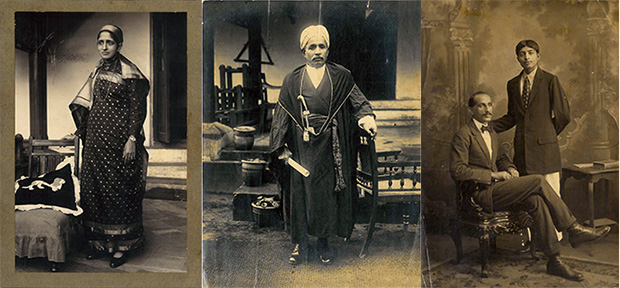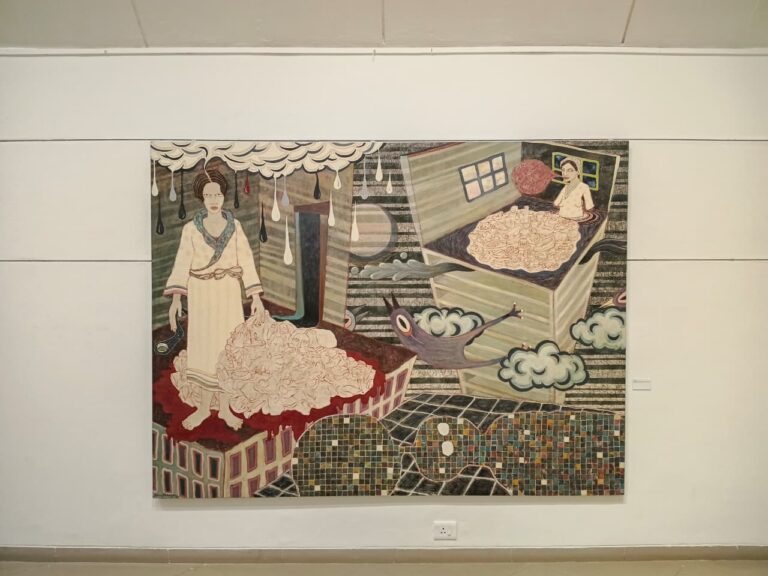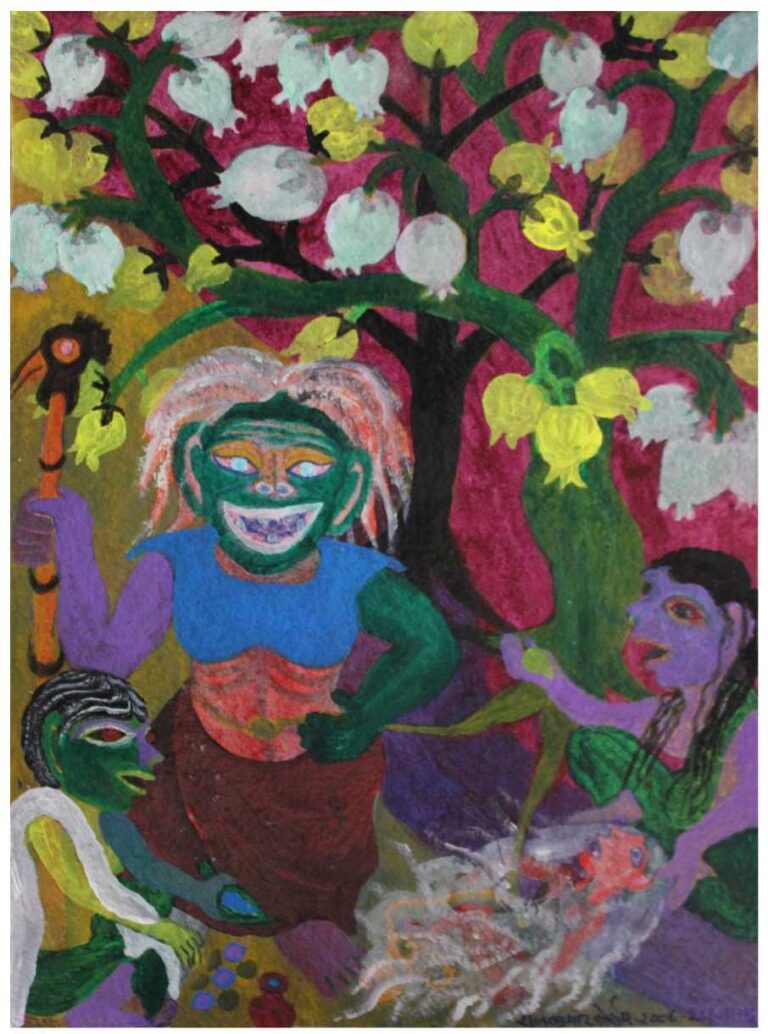Gyanonandini Tagore from Calcutta made this style of wearing the saree popular, where the upper end of the cloth was draped over the left shoulder. It is recorded that Gyanonandini was inspired by the gara in Bombay, in an ensemble comprising of European inspired bodice blouses, petticoats and Western-style leather shoes. Soon, this Indo-Western garb was widely adopted by members of the Indian royalty and aristocracy of British India. In the early 20th Century in Bengal, Victorian-style velvet embroidered bodices with lace and foreign trims were a prominent trend among the Indian women under the Raj. In time, its many iterations, several much simpler in comparison, became popular across the subcontinent, where women from the professional and mercantile elites also adopted this Indo-Western way of dressing


These three photographs are of my great-grandmother (opposite), great-grandfather (bottom left) and grandfather with my uncle (bottom right) respectively. They are from an album dated to the 1920s and 1930s from Coorg, and show both traditional and Western styles of dressing. The Coorgs from Karnataka, trace their origins to members of Alexander’s army. These officers of the Macedonian Emperor came from Yemen and stayed behind in the Indian subcontinent after his death, around 4th Century B.C. Alexander is known to have reached the region of present Pakistan and North-West India, after his conquest of Persia, while attempting to conquer the entire world. My grandfather wears an ensemble very similar to Yemeni traditional dress, in vogue even today. The portraits of his sons — my grandfather and granduncle in Western suits indicate how European attires were fast replacing traditional clothing among young men in various communities in India during the early 20th Century. My grandmother wears a draped ensemble typical of the Coorgs till date, comprising of a long dress wrapped around the body and a square scarf tied around the head. Both these textiles can be identified as Benarasis, their designs reflecting a particular genre known in the Benaras handloom industry, made for the South Indian, Deccan and the Maratha markets in the 19th and early 20th Centuries.















